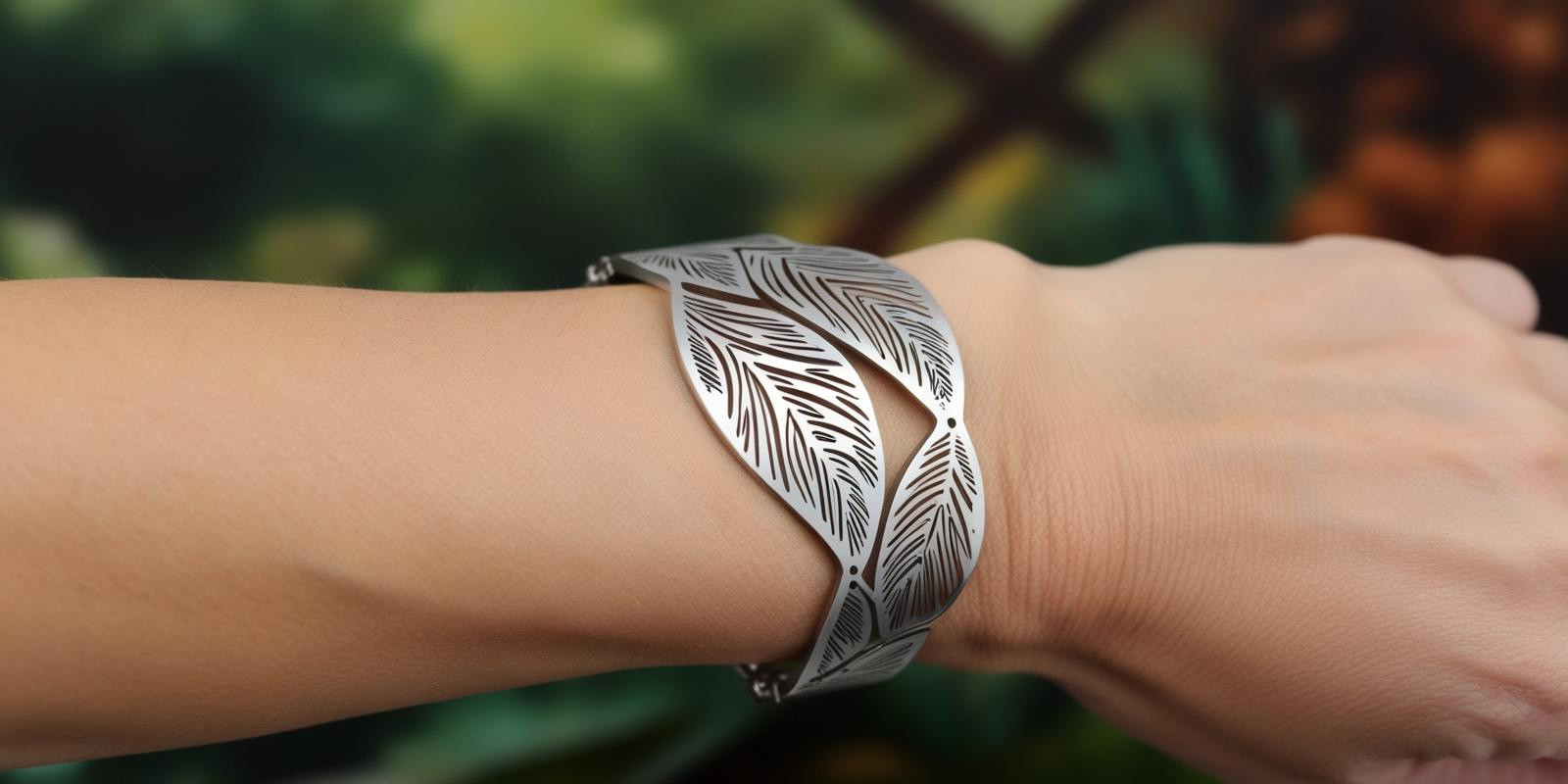Jewelry Design
























Jewelries are decorative accessories used in human culture as means of decoration. Jewelry is made from a wide variety of natural materials such as oysters, pearls, diamonds, topaz stones, metals and synthetic materials based on polymers. Jewelry can be used to decorate body parts of women and men or to decorate fashionable accessories. Jewelry usually has much higher value than of the material it is made of. Some historical jewelry gain value from its age. There are unique handmade jewelries, which includes sawing, stamping, engraving and embedding stones - all familiar methods from the classical jewelry industry.
In the wake of the Industrial Revolution, many technologies and processes have been introduced and have enabled the mass production of jewelries in a rapid and precise manner that preserves the authentic, hand-shaped look. A jewelry designer is a professional who designs jewelries and creates it according to demand (personal jewelry) or according to the design line that he makes. In his workshop, the designer uses the tools and technologies at his disposal and artistically expresses his statement in the final objects. Designed jewelry is usually unique and can made of a variety of materials or combination of more than one material. Gold and silver are the main metals used in the world of jewelry, but there are also jewelries made of brass and copper, which are a cheaper substitute for precious metals.
Laser cutting technology is one of the most advanced technologies in the world of jewelry design. it is becoming increasingly common and possible today to laser-cut a very large variety of materials such as: metals, plastics, wood, fabrics, silicon and more. Among the metals are gold, silver, brass, copper, galvanized Steel and Carbon Steel, stainless steel and more. Metals can be cut in a wide range of thicknesses from almost zero to a few millimeters thick.
With the laser technology, fine metal sheets can be finely pierced and become lace like perforated objects, thus creating complex items. Laser cutting also allows the production of three-dimensional bending parts that is made out of a two-dimensional sheet. The technology enables the implementation of new design ideas that cannot be otherwise implemented. The process does not require special knowledge, tools or skills, which are usually required for hand-made craftsmanship. Laser cutting allows mass production as well as relatively small batches of production and can give handmade look to the final jewelry. Laser cutting is a friendly, fast making process and enables the rapid production from a file to the final item. This immediacy enables both the professional designer and the amateur designer to design and create their own original range of jewelries. The ability to move from two-dimensional drawing files to the end result makes laser cutting an essential tool. The technology saves expensive time releasing more of it to improving the design.
In addition to the laser cutting options, the laser technology also allows marking and engraving on the surface of the material in a precise and gentle yet durable and UV protected. Many applications such as accessories design, pendants and other fashion accessories benefit of laser engraving technology. The combination of laser engraving and laser cutting enables the manufacturing of a wide range of fine and delicate jewelry.
Other materials that can be laser engraved are: papers of all types, cartons and cardboard, acrylic boards and other plastics in a variety of thicknesses, fabric and leather sheets, rubber, silicon and more.
For a quote - Press Here!
אנו מאמינים שלכולם ללא יוצא מן הכלל מגיע ליהנות מהביקור באתר שלנו ולכן משתדלים שהאתר יהיה ברור ונגיש ויאפשר גלישה נוחה לנעזרים בטכנולוגיות מסייעות.
האתר תוכנן לעמוד בהנחיות הנגישות של ה-World Wide Web Consortium ברמה AA.
אם נתקלתם בבעיית נגישות כלשהי באתר אנא פנו אלינו במייל [email protected]
ניתן לנווט ולהשתמש באתר באמצעות מקלדת בלבד.
להפעלת אפשרות הניווט באמצעות מקלדת יש ללחוץ על מקש ה-TAB (טאב).
לחיצה על TAB תעביר אתכם לקישור הבא (יודגש בצהוב) ולחיצה על SHIFT + TAB תחזיר אתכם לקישור הקודם.
לחיצה על מקש Enter תפעיל את הקישורים השונים.
בטפסים שבהם ניתן לסמן אפשרויות - בחירת האפשרות מתבצעת באמצעות מקשי החיצים במקלדת (למעלה/למטה).
במצגות המדיה באתר (תמונות/וידאו) ניתן להחליף תמונות באמצעות מקשי החיצים במקלדת (ימין/שמאל).
*תפריט הנגישות מותאם לדפדפנים Explorer 10 ומעלה, Chrome ו-Opera. בדפדפנים firefox ו-Safari במחשבי mac יש להפעיל את אפשרות הניווט באמצעות מקלדת בתפריט הגדרות הדפדפן.
לחיצה על מקש ה-TAB תפעיל את אפשרות הניווט הנגיש באתר. בראש האתר יופיעו האפשרויות:
הצהרת נגישות - פתח את טקסט הצהרת הנגישות של האתר.
דלג לתוכן - התחל את הניווט מאיזור התוכן המרכזי של הדף (מדלג על אפשרויות הניווט באיזור העליון).
דלג לתפריט - התחל ניווט מתפריט האתר הראשי.
דלג לחיפוש - עבור לתיבת החיפוש באתר (במידה וקיימת אפשרות חיפוש באתר).
דלג לעגלה - עבור לאזור עגלת הקניות (במידה וקיימת חנות באתר).
הפעלת ניגודיות גבוהה - שינוי פלטת צבעי האתר כך שתתאים לעיוורי צבעים וללקויי ראייה.
אפשר לשנות את גודל הטקסטים באתר באמצעות שימוש במקשים CTRL + או באמצעות תפריט האפשרויות בדפדפן (zoom).
להגדלת הטקסט באתר: השתמשו במקשים CTRL + .
להקטנת הטקסט באתר: השתמש במקשים CTRL – .
לאיפוס הטקסט באתר לגודלו המקורי: השתמשו במקשים CTRL 0 .
לחיצה על כפתור ״הפעלת ניגודיות גבוהה״ בתפריט אפשרויות הנגישות מבטלת את צבעוניות האתר ואת תמונות הרקע. הטקסטים יופיעו בצבע שחור על רקע לבן.
התכנים באתר כוללים סימון תקני של כותרות, טבלאות, פסקאות, רשימות, קישורים, טפסים וכפתורים.
תמונות באתר כוללות תיאור אלטרנטיבי (ALT) אם הן בעלות משמעות.
הטפסים באתר נגישים לקוראי מסך ומשתמשי מקלדת.
באתר עשויים להופיע אזורי תוכן המוצגים מאתרים אחרים במסגרת iframe. נגישות איזורים אלה תלויה באתר המתארח ואין לנו אפשרות להבטיח את נגישותם. לדוגמא - כפתורי שיתוף ותיבת תגובות של פייסבוק, עמודי סליקה של ספק צד ג׳ או כל תוסף אחר שמשולב בתוכן האתר.
האתר מותאם לצפייה במכשירים ניידים (רספונסיבי).
באתר נעשה שימוש ב-ARIA לצורך התמצאות ושימוש באתר באמצעות תוכנות קורא מסך.